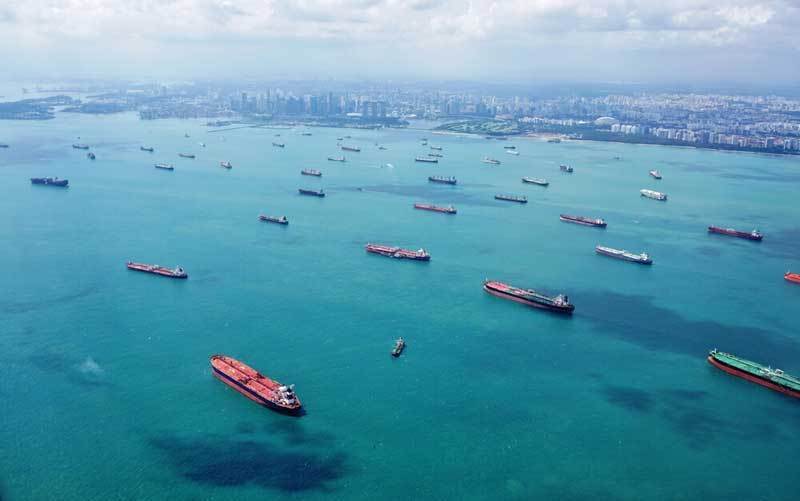Ship equipment is said to be a means of support when the ship sails in the waters. The type of equipment that must be installed is ship navigation and communication equipment. Useful for determining the direction of the ship so that it gets to its destination safely.
Navigation tools were popular in use since the time before Napoleon Bonaparte’s voyages. However, in the past, sailors relied on conventional or natural navigation. Like celestial bodies, stars and the sun are considered the most accurate directions.
In addition, it is very important for ships to have a means of communication that connects crew members with ship operators and other vessels. Check out the following reviews regarding ship navigation and communication equipment that must be checked before a ship sails.
Marine Navigation Equipment

Onboard ship equipment and navigation resources along with ship equipment and supplies are mandatory when sailing. One of the most important things is the navigation equipment that a cargo ship should ideally have, namely:
1. Marine Radar
Its main function is to detect the weather, clouds, and the presence of other ships in front. So that the crew and ship passengers avoid danger. Radar is an acronym for Radio Detection and Ranging which consists of a detection system, distance measuring and display of the ship’s track map.
Radar works to send radio waves that have a strong frequency and the receiver hears the echo back. Then an analysis of the reflected signal is carried out. The echo reflector will indicate the location of the ship.
Radar is considered to be effective in detecting long-distance objects that have not been detected by sound and light. The most widely used marine radar is the Automatic Radar Plotting Aid (ARPA) with the following functions:
- show the navigation direction of the ship,
- operation automatically acquiring targets and enabling manual performance,
- digital acquired target readings, sighting range, vessel speed, bearing, and closest point of approach (CPA),
- displays detailed information regarding collisions and direct assessment of the PPI using vectors,
- capable of maneuvering the ship, changing speed, and automatic ground stabilization for navigation needs,
- speed up the process of obtaining radar information.
2. Ship satellites
The ship’s satellite uses radio signals that are transmitted to receivers or operators on land. So, the captain is able to determine the location of the ship easily. Ship satellites that are widely used by sailors are Global Positioning Satellite or GPS. Its function is used as a search tool for accurate and direct Earth coordinates.
3. Map
Maps are classified as the main equipment that must be present during a voyage. Generally, the map used by ships is two-dimensional and the projections use a certain scale. The captain and crew must know cartography to read maps. The map projection is divided as follows:
a. Map projection according to the projection plane:
- Zenithal Projection
- Cylinders Projection
- Cone Projection
b. Map projection according to the position of the projection plane:
- Normal projection
- Transverse projection
- Oblique projection
c. Map projection according to distortion-free elements:
- Projection conform
- Projection equivalent
- Equidistant projection
4. Compass
Compass is a navigation equipment for pointing and determining the direction of the ship. Usually the compass arrows are magnetic and aligned with the earth’s magnetic field. The cardinal directions shown by the compass are north, south, east and west. Sailors generally use a compass along with a clock and a sextant.
The compass has a type of pointer or direction that follows a sundial. This type of compass variation tends to be fragile in structure. There is also a compass that is used as a direction, namely the Gyrocompass.
5. IRS (Inertial Reference System)
The Inertial Reference System is a navigation equipment for modern ships. The installation is in the form of a system that functions to find out the coordinates of the ship based on the inertial effect.
The IRS system differs from the Ship GPS system in that it does not require ground observation stations or operator assistance. Modern IRS systems are usually equipped with a digital map for optimal operation.
Ship Communication Equipment

In addition to the use of ship navigation equipment, ship communication equipment is also needed. This is because ships cannot sail alone without coordinating with operators on land. Some of the minimum ship communication equipment must be available, including:
1. Telegraph
Telegraph, a ship communication tool which has the function of sending and receiving messages remotely. The system in the telegraph uses Morse Code to capture radio frequency waves.
Morse code is a method for sending information according to standard data for sending light and tone. There are various dot and dash taps in messages in the form of sentences, words, letters, numbers, and punctuation marks.
There is also morse code notified by the flag, whistle, light, and morse beat. Messages from the telegraph are sent by operators using Morse code known as telegrams. Crew members and sailors more often call it a wire or cable message.
2. Marine VHF Radio
Marine VHF radio, a ship communication tool installed as a means to call rescue teams, bridges and marines, as well as port operators. The operation of this communication tool uses VHF frequencies, between 156-174 MHz.
Marine VHF radio set is a combined transmitter and receiver that is operated to international standards. This radion frequency points to an international channel, namely Channel 16 (156.8 MHz).
Also read: Symptoms, Causes, and Effects of Gambling Addiction


